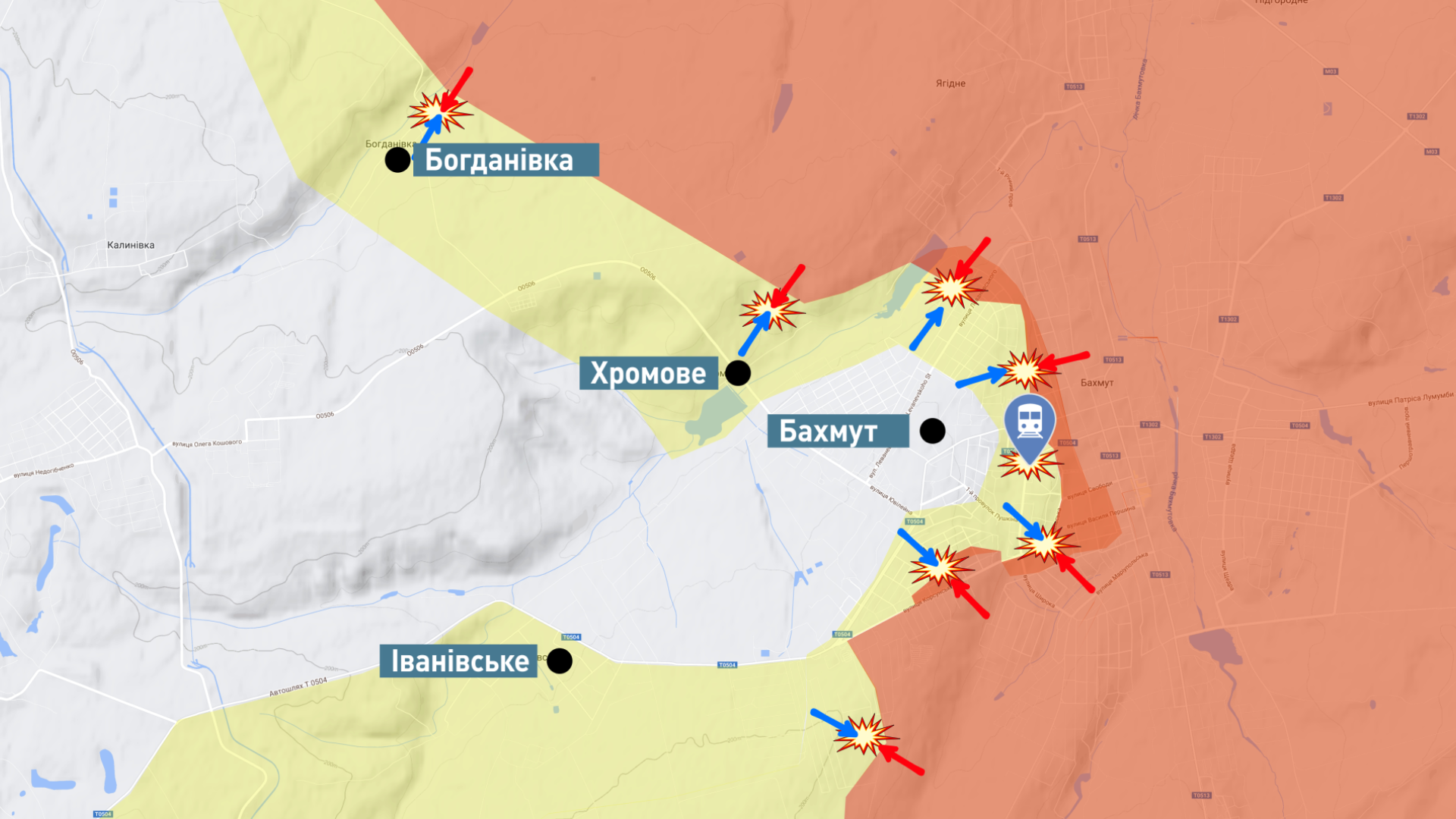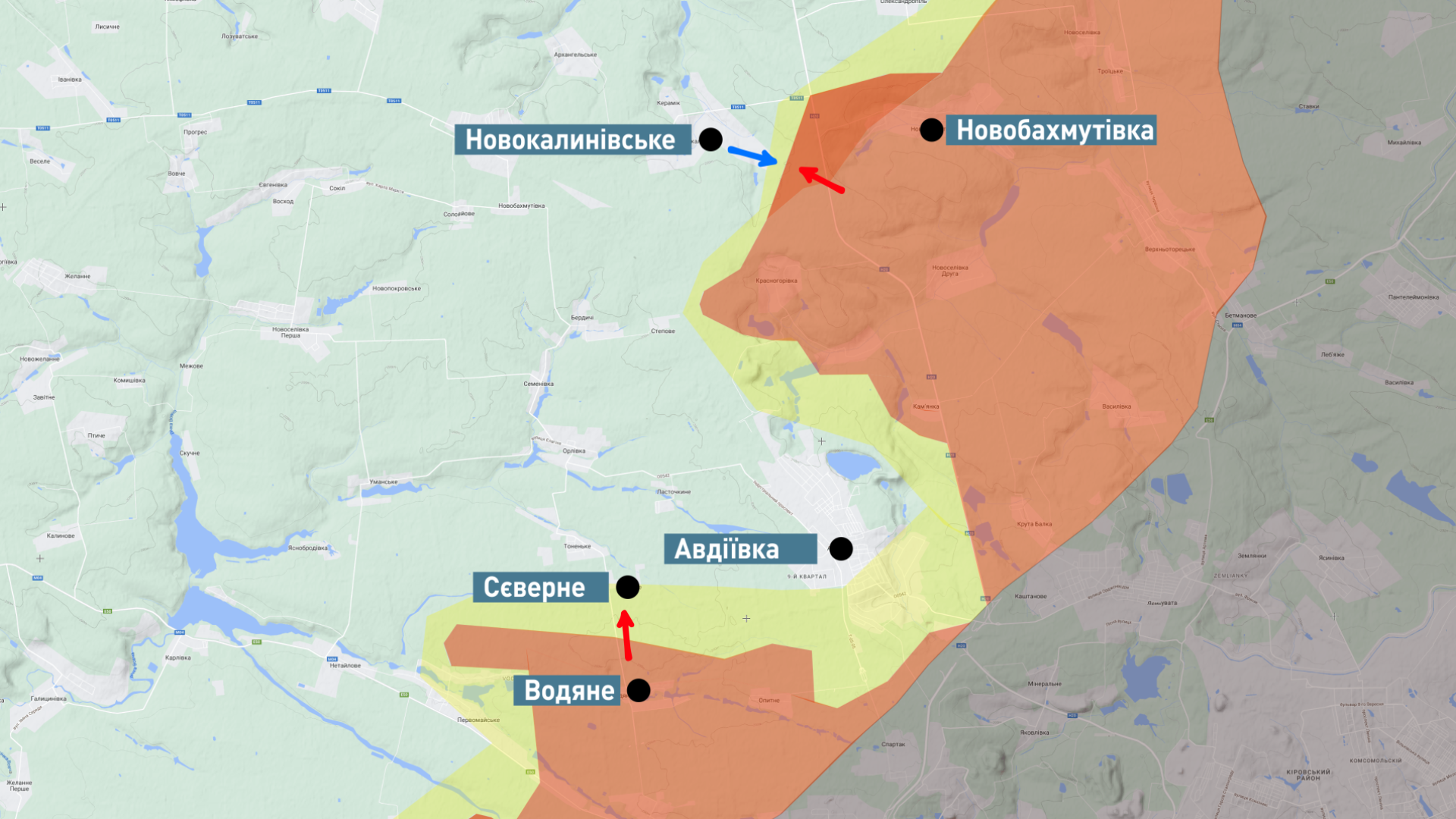
Russia will persist in pressuring Ukraine to delay counteroffensive, pincer movements around Bakhmut are getting weaker: weekly military summary
Russia may continue to put pressure to postpone the counteroffensive. A major challenge for Ukraine’s General Staff is to find the weaknesses of the Russian troops in the defense and go on the offensive
Ukrainian military analyst, CEO of Defense Express military expert group, Serhiy Zgurets has shared his latest assessment of the frontline situation in Ukraine.
One year since the Ukrainian Armed Forces sank Moskva, the flagship of Russian Navy
The story of the sinking of the Moskva cruiser shows the ability of the Ukrainian Armed Forces to use all chances and achieve a 100% result. It was a unique chance and it led to a historic event when Russia lost the Moskva. The air defense systems were not put on firing positions, and Ukraine took advantage of it. There were two rockets, but according to the calculations, 4 or 6 rockets were needed to sink such a cruiser. We have seen a result that the whole world will remember, that we have weapons that destroy such Russian ships.
Every Bakhmut quarter is a dead end for Russian army
The entire front line is difficult. All four directions - Lyman, Bakhmut, Avdiivka and Marinka - remain consistently difficult. Fighting resumed in the Vuhledar area today. The transfer of reserves from Avdiivka to Bakhmut is only part of the troops. There was also a report from the Royal United Services Institute (RUSI) that part of the troops were being moved from Svatove to Bakhmut. The T-90 M battle tank is operating in the city just from there. Russia is using every opportunity to ensure advancement in Bakhmut, especially in the central part of the city, where Wagner's troops are operating, and on the flanks, where "elite" regular units are operating. The "elite" ones ended at the beginning of the war, when a significant number of airborne troops were eliminated. The airborne units are trying to hold the flanks. Oleksiy Hromov, deputy head of the Main Operational Directorate of the AFU General Staff, said that in addition to the Wagner troops, new PMCs are emerging that will be deployed to the Bakhmut area. It seems that the frontal assault in the city is going to be supported by private military companies. Probably attempting to save the lives of the paratroopers.
There was an article in the NYT where the commander of the 93rd Brigade, which holds Bakhmut, said that they were holding the Russian enemy back, preparing the area for a counteroffensive and fighting for every building. Now there are about 20 quarters left in the Bakhmut area that are controlled by the Ukrainian Defense Forces. Each of them is a dead end for the Russian army. The brigade commander hinted that they need more ammunition for artillery, tanks, and grenade launchers. The issue of ammunition in the city remains quite acute. There is rain again today, so the artillery is working less due to this, because the copters are not flying there and there are problems with targeting.

In urban battles, the Russian forces are trying to use all available weapons. T-90 tanks, of which 15 have already been destroyed. These are the newest tanks in Russia. They are massing flamethrower systems, like Solntsepyok, engineering ammunition, and artillery. Anything that can ensure the destruction of the buildings where Ukraine's defense takes place is being used by the Russian troops.
What is the tactic for tanks? It breaks the wall with a shot, an assault group comes in and tries to enter the house. We've seen Russians get into buildings that have been mined by the Ukrainian army and blow up. There is hysterical whining in many Russian publics. General Hromov said that in the two weeks since the end of March, more than 4,000 Wagner and regular Russian soldiers have been killed in the Bakhmut area. This figure indicates that we are trying to destroy the maximum number of Russian soldiers. This is not an easy task - we need to hold the flanks and prevent the Russian troops from advancing to the central part of the city.
The pincer movements around Bakhmut are getting weaker. The flanks of the Ukrainian Armed Forces are holding steady enough, there were even counterattacks in the area of Ivanivske with some success. Russians' attempts to operate from Bohdanivka, Orikhovo-Vasylivka or attempts to reach Ivanivske – there are no qualitative changes for them. There are two defense lines in the central part of the city: the Bakhmutka River, which the enemy crossed, and the railroad track, which has two important points. These are the train station and the elevator. Recently there was a statement about the Russian army seizing the station, today it was said that the Ukrainian army had recaptured it. The fighting is going on along the railroad tracks and it is not clear what is happening now. The track is a good defense line. A lot of forces from both sides are concentrated there. It's hard to say exactly what is happening in Bakhmut right now. About ⅔, even more, is controlled by the Russian Federation, but every house becomes the basis for Ukraine's resistance and destruction of the Russian enemy.
Each section of the frontline should be viewed through the prism of the Ukrainian counteroffensive
In Avdiivka, the Russian forces are trying to implement the same methods as in Bakhmut. There is a settlement called Orlivka above the city, through which there is a traffic connection. Russia is trying to move from Vodiane to Sievierne and then to Orlivka. Another direction is Novobakhmutivka, Stepove and Berdychi to close the line of encirclement from the north. There are no qualitative changes there either. The Russian invaders are using all methods of fire on Avdiivka and are trying to ensure their advance towards the city to reach the best defense lines in anticipation of Ukrainian counterattack. Avdiivka, Marinka and the line behind Bakhmut are the areas that Russia wants to occupy before the counteroffensive begins. They want the defense lines that will allow them to counteract most effectively. Each section of the frontline must be viewed through the prism of Ukrainian counteroffensive actions.

Russia may continue to put pressure on Ukraine to delay counteroffensive
The front line is 800 kilometers long. And there are only four areas where effective fighting is taking place. It seems that the Russian forces are trying to further fuel the sources of confrontation. They want Ukraine to start using its forces for a counteroffensive to deter the Russian offensive. These efforts are now running out of steam. Hromov said that Russia will accumulate forces and continue fighting during the spring and summer campaign. The Russian forces may continue to put pressure on Ukraine to postpone the counteroffensive. And finding this balance is a serious challenge for the General Staff – to find the weaknesses of the Russian army in the defense and go on the offensive.
On the one hand, all Russian forces are focused on balancing, holding the front line and conducting offensives, which AFU are holding back. On the other hand, they are creating engineering structures that need to be overcome. And when you are overcoming them, you are under enemy fire, which poses a threat to life. This is what requires the General Staff to develop such an offensive operation so that the enemy does not guess where and when the offensive will take place and with what forces.
New Ramstein, Russia gears up in Crimea and Zaporizhzhia region
The largest Russian forces are concentrated along the Svatove-Kreminna line. Fighting continues in the forests near Serebrianske and Bilohorivka. The Russian forces have long been tasked with pushing Ukrainian troops back to the Zherebets River and creating conditions for pushing them further to the Oskil River. Russia has a settlement near the border - Urazovo. It has been turned into a hub with a lot of equipment. There is also Ukrainian Starobilsk, also a hub for the Russian army, which is the second line of defense behind the Svatove-Kreminna line.
In Zaporizhzhia region, the total line of trenches exceeds 130 km. There is the first line of defense with minefields. Then there are the "dragon's teeth'' fortifications and more mines, followed by an infantry line and anti-tank ditches. A similar line begins 10 kilometers further. They do this along and across the front. In terms of fortifications, the effectiveness depends on the number of troops. If there is equipment, artillery and personnel there, it creates significant problems and the General Staff must take this into account. T-54 and T-55 tanks are indeed being redeployed to the Zaporizhzhia direction and I think they will be used to strengthen these structures.
In addition to Zaporizhzhia, the Crimean isthmuses are also being fortified. It makes no sense to build fortifications in the coastal area. The triangle of Armiansk - Krasnoperekopsk - Medvedivka. They are creating significant fortifications there. There is also a hub with a significant amount of military equipment. A significant stockpile of military equipment is being created in Medvedivka, which is stored and not transferred to anyone.
At the Ramstein meeting, the issue of ammunition, the delivery pace of heavy armored vehicles, and the prospects of F-15\F-16 supply will be raised again.
- News













































